#esc 1961
Text
Eurovision Fact #440:

The winning song in 1961, 'Nous Les Amoureux' by Jean-Claude Pascal, was the first song performed at Eurovision about a gay romance.
It was revealed that the song was about "[denouncing] the repression against homosexual love..."
[Sources]
Canes 1961, Eurovision.tv.
Jean-Claude Pascal Acteur Chanteur, hexegonegay.com.
'Lyrics of Nous Les Amoureux by Jean-Claude Pascal,' Genius.com.
#esc facts oc#eurovision#eurovision facts oc#eurovision song contest#esc#esc 1961#Jean-Claude Pascal#esc winners#lgbt representation#lgbt history
97 notes
·
View notes
Text

Lill-Babs representing Sweden in the Eurovision Song Contest Grand Prix Eurovision de la Chanson Européenne 1961, with the song April, April
0 notes
Text
Oh, Luxembourg will start participating in Eurovision again next year??
#I hope they'll celebrate their return after 30 years with an explicitly gay song. You know. to honor their first win in 1961.#esc#eurovision#esc Luxembourg#🇱🇺
6 notes
·
View notes
Text
youtube
Sehnsucht, Jimmy Makulis | Austria, Eurovision Song Contest Grand Prix Eurovision de la Chanson Europeéne 1961
15th place with 1 point
3 notes
·
View notes
Text
Apollo Program: Block I Command and Service Modules

The Apollo Command and Service Module (CSM) contract was award to North American Aviation on November 28, 1961. At the time, the plan was to land the entire CSM on the lunar surface via the direct ascent and the initial design did not include a means to dock with another spacecraft. Later on this was changed to the lunar orbit rendezvous and lunar landing would be preform via the Lunar Module. This required a major redesign of the CSM and in 1963, NASA decided the most efficient way to keep the program on track was to proceed with the development in two versions:
Block I: the preliminary version for early low Earth orbit test flights only.
Block II: the new lunar-capable version, which included a docking hatch, incorporating weight reduction and lessons learned from the Block I.
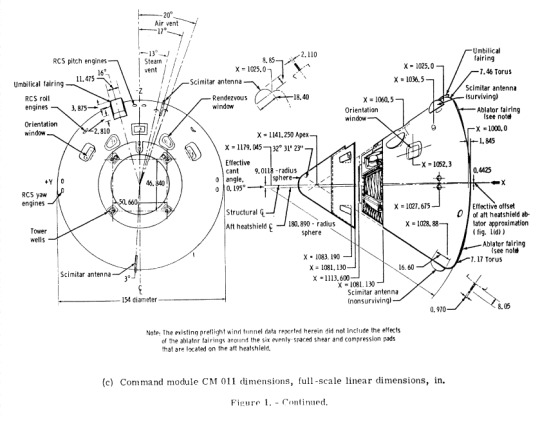

The CSM Block I was to be used for all uncrewed Saturn IB (AS-201 & AS-202) and Saturn V (AS-501 & AS-502) test flights, plus two manned missions. This was changed to only one in late 1966, being Apollo AS-204, aka Apollo 1. After the Apollo 1 fire all manned missions were to use the improved Block II versions.
Block I Command and Service Modules produced:
CSM-001: systems compatibility test vehicle, used on propulsion tests at White Sands Missile Range. Completed tests on September 7, 1968. CSM scrapped.
CSM-002: used for powered on tumble abort tests, flew on A-004 Little Joe II, January 20, 1966, at White Sands Missile Range. Modified to 002A.
CM-002A: used to in land drop tests. Modified to 002B
CM-002B: used on pogo tests at Downey, California. Modified to BP-23. On display

On display at the Cradle of Aviation Museum, Garden City, New York.
CSM-003: cancelled before construction began
CSM-004: structural tests, CM modified to 004B.
CM-004A: Used for Thermal and dynamic tests, redesignated BP-27 on the Saturn I Block II (SA-5D). On display.

On display with the Saturn I Block II Dynamic Test Vehicle at the U.S. Space & Rocket Center, Huntsville, Alabama.
CM-004B: Tested a new unified hatch design at Downey, California. CM offered to Smithson but declined, later scrapped by Rockwell at Downey, CA.
CSM-005: cancelled before construction began
CSM-006: CM used for systems capability tests and modified to Block II for ESC tests at AiResearch in Los Angeles, CA. Later used for demonstrating tumbling debris removal systems. CM offered to Smithsonian but declined, later scrapped. SM redesignated as SM-010, on display with BP-23A.

BP-23A and SM-010 on display at the U.S. Space & Rocket Center, Huntsville, Alabama.
CSM-007: various tests including acoustic vibration and drop tests, and used as a ground test vehicle. CM modified to 007A. SM used for fitcheck of docked model facility, current location is unknown.
CM-007A: used by Astronauts for water egress training, water-survival training and extended recovery training in the Gulf of Mexico. CM was refitted with Block II improvements. Underwent testing for Skylab at the McKinley Climatic Laboratory, Eglin AFB, Florida, 1971–1973. On display.
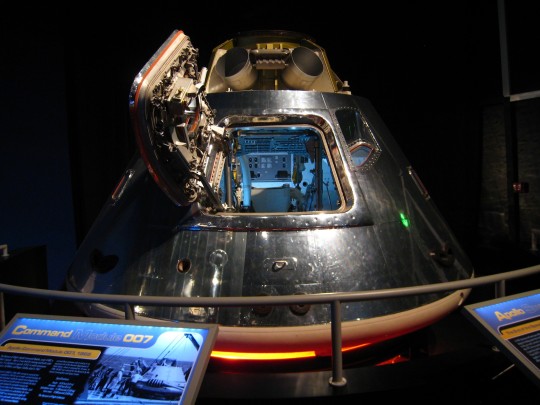
CM-007A is on display at the Seattle Museum of Flight, Seattle, WA.
CSM-008: complete systems spacecraft used in thermal vacuum tests. CM modified to 008A, SM offered to Smithsonian but declined (August 1973), later scrapped by Rockwell International at Downey, CA May 1977.

CSM-008 in Chamber A at JSC.
CM-008A: used in land tests at Downey, CA. CM scrapped by March 1971.
CSM-009: flew on AS-201 (later designated Apollo 2), CM modified to 009A.
CM-009A: modified with support structural tests for land impacts. CM offered to Smithsonian but declined, on display.

On display at the Strategic Air and Space Museum in Ashland, Nebraska
CSM-010: originally intended for a launch abort test, mission cancelled and CM was modified into 004A. SM cancelled.
CSM-011: flew on AS-202 (later designated Apollo 3), CM modified to 011A.
CM-011A: used on land impacts tests and extensively damaged. CM offered to Smithsonian and is on display.

On display at the USS Hornet Museum in Alameda, California.
CSM-012: intended for AS-204 (Apollo 1). CM is in storage at Langley Research Center. SM scrapped. Hatch on Display.
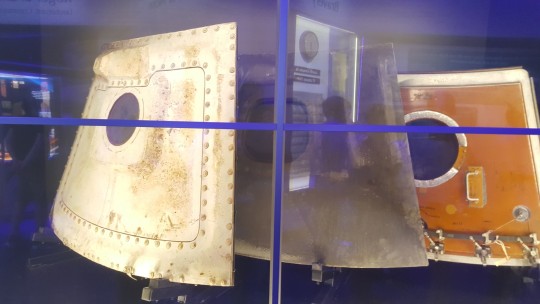
Apollo 1 hatch on display at the Kennedy Space Center.
CSM-013: cancelled before construction began
CSM-014: intended for AS-205 (Apollo 2). CM disassembled as part of Apollo 1 investigation and modified to 014A. SM used on AS-502 (Apollo 6).
CM-014A: ground testing. CM Scrapped May 1977.
CSM-015: CM cancelled before construction began. SM-015 was used with BP-30 and LES-014 for Swing Arm tests and backup spacecraft for Apollo 6. On display.

On display at the Kennedy Space Center.
CSM-016: CSM cancelled before construction began. Only the launch escape tower (LES) completed, on display with BP-27 the Saturn I Block II (SA-5D) at U.S. Space & Rocket Center, Huntsville, Alabama.
CSM-017: flew on Apollo 4 (AS-501). CM on display. SM destroyed when the propellant tank explosion during ground testing. CM on display.

On display at the Stennis Space Center in St. Louis, Mississippi.
CSM-018: cancelled before construction began
CSM-019: cancelled before construction began
CSM-020: flew on Apollo 6 (SA-502). SM flew on Apollo 4. CM on display.
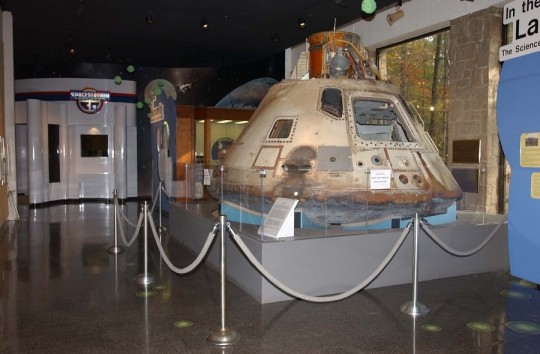
On display at the Fernbank Science Center in Atlanta, Georgia.
source, source, source, source, source, source, source, source, source, source, source
NASA ID: link, link, JSC-03600, S66-59204
#Apollo Program#NASA#CSM-001#CSM-002#CSM-003#CSM-004#CSM-005#CSM-006#CSM-007#CSM-008#CSM-009#CSM-010#CSM-011#CSM-012#CSM-013#CSM-014#CSM-015#CSM-016#CSM-017#CSM-018#CSM-019#CSM-020#Apollo 1#Apollo 2#Apollo 4#Apollo 6#AS-201#Apollo CSM Block I#A-004#my post
126 notes
·
View notes
Photo


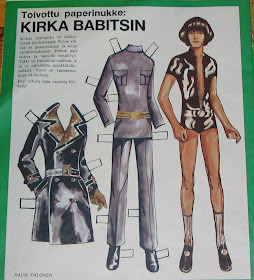
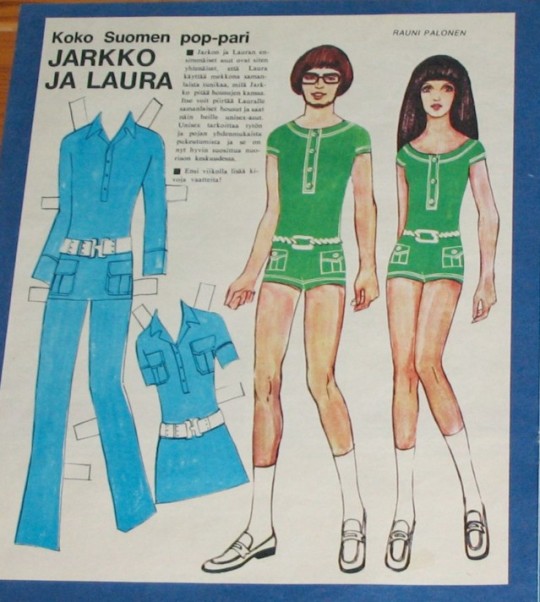




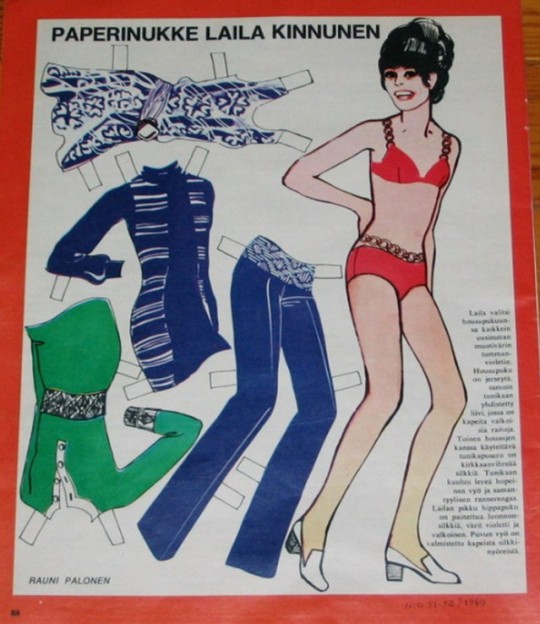
Finnish weekly magazine APU used to publish famous people as paper dolls between 1968 and 1998. The dolls ranged from sports stars to royals, tv comedians, beauty queens, and of course singers, including our Eurovision representatives.
Many of the dolls were collected and printed into a book in 2008. It doesn’t include all of them, but at the end of a book there is a list of all the dolls published and after some research I managed to find pictures of all of the Eurovision dolls. I will collect each decade into a different post.
Finnish Eurovision representatives from the 1960′s, ordered by the year their dolls were published in:
1968: Kristiina Hautala (ESC 1968), also the first paper doll published in the magazine
1968: Katri Helena (ESC 1979 & 1993)
1969: Kirka Babitzin (ESC 1984)
1969: Jarkko ja Laura (ESC 1969)
1969: Päivi Paunu (ESC 1972)
1969: Fredi (ESC 1967 & 1976)
1969: Ann-Christine (ESC 1966)
1969: Lasse Mårtenson (ESC 1964)
1969: Laila Kinnunen (ESC 1961, Finland’s first ESC representative)
#just when you thought this contest can't get any weirder#Esc facts with Bie#paper dolls#paperinuket#eurovision#euroviisut#eurovision history#finland
55 notes
·
View notes
Text
MY TOP TEN SPAIN ENTRIES IN ESC (1961-1999)
hope you like it :)
10. VIVO CANTANDO [I LIVE SINGING] - SALOMÉ (1969, 1st PLACE)
youtube
desde que llegaste ya no vivo llorando / vivo cantando / vivo cantando
[since you came into my life i no longer live crying / i live singing / i live singing]
Here we have, the second and for now the last win of Spain in Eurovision, Vivo Cantando!! I like it, but not as much as other songs in the list, and imo it gets a bit repetitive in the end, so that's why it's number 10.
9. BAILEMOS UN VALS [LET'S DANCE A WALTZ] - JOSÉ VÉLEZ (1978, 10th PLACE)
youtube
voulez vous danser avec moi? / ¿quieres que bailemos un vals?
[do you want to dance with me? / may we dance a waltz?]
The chorus of this song fucks so much, it's super catchy and perfect to scream at the top of your longs, but the rest of the song is a bit average, that's why it's so low.
8. EN UN MUNDO NUEVO [IN A NEW WORLD] - KARINA (1971, 2nd PLACE)
youtube
tus sueños de siempre se harán realidad / en un mundo nuevo y feliz
[all your dreams will come true / in a new and happy world]
KARINA MY BELOVED 🥰🥰🥰🥰 No but right now she has this role of adorable grandma everybody knows in Spanish pop culture, she's the best. Maybe my love for Karina played a major part on the placement of this song. Maybe. But the song is nice as well, it's not bad at all! And she got a movie made of her ESC experience which I have yet to see (it's also called 'En un mundo nuevo', if you want to watch it)
7. BANDIDO [BANDIT] - AZÚCAR MORENO (1990, 5th PLACE)
youtube
tu ausencia en mis noches provoca lamentos / suspiros y llantos, y oscura pasión
[your absence in my nights conjures laments / sighs and cries, and a dark passion]
THEY INVENTED CAMP. No but this performance is everything, they're great and the song is a bop!!! I think we need more heavy (cante jondo) flamenco songs like this one with flamenco and especially roma artists like Azúcar Moreno to go to Eurovision (maybe not them tho, I loved that they were in the Benidorm Fest this year but you know...). Also that moment when the playback started playing wrong and they got mad and left the stage, iconique.
6. YO SOY AQUEL [I AM HE] - RAPHAEL [1966, 7th PLACE]
youtube
y estoy aquí, aquí para quererte / estoy aquí, aquí para adorarte / yo estoy aquí, para decirte / amor, amor, amor, amor
[and i'm here, here to love you / i'm here, here to adore you / i'm here, here to call you / love, love, love, love]
I still can't believe Raphael went to Eurovision. For comparision, it is like if Harry Styles represented the UK right now; absolutely insane behaviour. And the song is SOOO GOOD!!!! It is an excelent karaoke song, the chorus is super cathartic and the emotion is incredible. There was also a really iconic Trina commercial done with a parody of the song and it's *chefs kiss*, probably one of the best commercials ever done here. Also, Raphael's other song in Eurovision, Hablemos del Amor, is also pretty good, but I didn't want to have two of his songs in this top.
5. ERES TÚ [IT IS YOU] - MOCEDADES (1973, 2nd PLACE)
youtube
eres tú / como el agua de mi fuente / eres tú / el fuego de mi hogar
[it is you / like the water of my fountain / it is you / the fire of my hearth]
This song, man. It leaves this fuzzy feeling in my chest after listening to it, it's just incredibly wholesome and epic at the same time, I can't believe it didn't won cause it screams winning song. Also, of course, hearing it I'm reminded of the OT 2017 version of it, which also was pretty good I think (you thought I wouldn't talk about OT here, huh??? well you were so so wrong).
4. ESTANDO CONTIGO [BEING WITH YOU] - CONCHITA BAUTISTA (1961, 9th PLACE)
youtube
estando contigo, contigo, contigo / de pronto me siento feliz / y cuando te miro, te miro, te miro / me olvido del mundo y de mí
[being with you, with you, with you / suddenly i feel happy / and when i look at you, i look at you, i look at you / i forget about the world and about myself]
This was the first song Spain ever sent to Eurovision and oh my god we started with a banger!!!! Like it's so so good it's insane, it's a classic in Spanish pop culture and Conchita's performance was so so good!!! Incredible behaviour altogether. Also, this song is mostly known for being performed by child actor-turned-marxist and social activist legend Marisol and this gives me a perfect oportunity to plug the Marisol medley they did on OT 2020, which included fragments of this song, enjoy <3
3. LA, LA, LA - MASSIEL (1968, 1st PLACE)
youtube
todo en la vida es como una canción / te cantan cuando naces / y también en el adiós
[everything in life is like a song / they sing to you when you are born / and also in the goodbye]
The first win of Spain in ESC!!!!! This is one of those songs that may seem simple but then you actually listen to the lyrics (besides the la, la, las) and you start bawling your eyes off cause holy shit this deserved to win so much. It also justifies the presence of the la la las in the song which is insane!!! Anyways I love this song and I love Massiel and yeah, this right here was History of Spain <3
2. BAILAR PEGADOS [DANCING TOGETHER] - SERGIO DALMA (1991, 4th PLACE)
youtube
nuestra balada va a sonar / vamos a probar / probar el arte de volar
[our ballad is going to play / we are going to try / try the art of flying ]
Everytime this song plays I become a middle-aged woman screaming and crying and drooling after this man, I find myself guilty, I confess your honour. No but like when I was younger I was OBSESSED with this song. I definitely have cried listening to this song thinking about a crush, and I used to think this was the most romantic song in the world, even if it has the most cheesy and cringy verse ever 'bailar pegados es bailar / igual que baila el mar / con los delfines' [dancing together is dancing / just as the sea dances / with the dolphins] I still think it's a bop tho, an incredible song and performance altogether. Btw, Ruth Lorenzo covered this song in Benidorm Fest this year and yeah... I like it even more after that.
1. LA FIESTA TERMINÓ [THE PARTY IS OVER] - PALOMA SAN BASILIO (1985, 14th PLACE)
youtube
amor, perdón por lo de amor / me sale sin querer / tal vez porque te amaba / y ahora no, la fiesta terminó
[love, sorry for calling you love / i'm not doing it on purpose / maybe it's because i used to love you / and now i don't, the party is over]
This song makes me feel like very few songs do, I believe it's one of the best heartbreak songs ever, and of course it's excelent for karaoke. It's also therapeutic to sing it while crying, try it, I can say it works! So yeah, I just really love this song, it makes me feel lots of stuff and it's very very good :)
#esc#eurovision#esc spain#hope you like it!!#i think it's actually a crime that my number 1 song is the one who ended up being in the lowest position in the contest but whatever#Youtube
5 notes
·
View notes
Text
Beatles: un arrivo un nuovo film... anzi quattro
In arrivo un nuovo film sui Beatles... anzi quattro. Il produttore, regista premio Oscar, infatti, racconterà le storie originali di tutti i Fab Four, Paul McCartney, John Lennon, George Harrison e Ringo Star con le musiche originali. Chi sarà l'autore di questa impresa epocale? Sam Mendes: il regista di "American beauty", "Skyfall", "1917" (per citarne solo alcuni).
I film sui Beatles: il progetto
Non sappiamo ancora quando la quadrilogia sui Beatles uscirà; sappiamo però che i preparativi procedono speditamente tanto che si starebbero cercando già gli sceneggiatori. Sappiamo, inoltre, che il progetto è arrivato sulla scrivania della Sony lo scorso Natale. Sembra che l'entusiasmo di Sam Mendes abbia letteralmente conquistato il Ceo di Sony Picture Entertainment Tom Rothman e la presidente Elizabeth Gabler. Fiduciosi nel progetto hanno fatto alla Apple Corps Ltd. un'offerta davvero interessante. Non è tutto: Mendes è riuscito a ottenere per la prima volta nella storia non solo i diritti musicali ma anche i pieni diritti sulla storia da portare sul grande schermo. E' evidente che il progetto sia piaciuto non solo a Paul McCartney e Ringo Star, i due componenti del gruppo ancora vivi, ma anche gli eredi di John Lennon (il figlio Sean) e George Harrison (la figlia Olivia). Mendes avrà dunque pieni poteri sulle storie: da quanto sappiamo saranno quattro film sui rispettivi componenti della band di Liverpool raccontate in una sorta di connessione tra loro.
I Beatles sul grande...
Il primo film sui Beatles risale al 1968: "Yellow Submarine". Un cartoon onirico in stile pop art ispirato al celebre brano della band ripropone la storia dei malefici Biechi Blu. Creature ostili alla bellezza, ai fiori e alla musica, sono pronti ad attaccare il paese felice di Pepelandia. Sarà la musica dei Beatles, giunti a bordo di un sottomarino giallo, a ristabilire l'ordine e la pace.
Nel 1978 uscì il film d'esordio di Robert Zemeckis, "1964: allarme a New York arrivano i Beatles!". Una pellicola che non ebbe grande successo di botteghino e raccontava, con ironia, non tanto la storia dei Fab Four quanto la cosiddetta beatlemania attraverso la storia di quattro amici del New Jersey che decidono di andare a vedere i Beatles in concerto dal vivo a New York. Ci riusciranno dopo mille avventure. I Beatles sono stati, infatti, un fenomeno sociale oltre che musicale e il film rappresenta una foto della generazione dell'epoca.
L'anno seguente esce "La nascita dei Beatles", il primo vero biopic sulla band condotto in modo tradizionale. Il regista, Richard Maquand, racconta gli esordi dei Fab Four e, uscito dopo un decennio senza la musica dei quattro di Liverpool, appare un po' come un desiderio nostalgico di tornare a vederli suonare insieme. I quattro di Liverpool non apprezzarono il prodotto. Uno dei pregi del film, però, è l'aver ricordato la figura di Stuart Sutcliffe, che fu bassista del gruppo dal 1960 al 1961, morì a 21 anni per emorragia cerebrale e che un po' tutti abbiamo dimenticato.
Stuart Sutcliffe è il perno intorno al quale ruota anche il film "Backseat - tutti hanno bisogno di amore" uscito nel 1994. La pellicola racconta, per lo più, la relazione di Stuart con Astrid Kirchherr. La fotografa tedesca ritrasse i Beatles in foto in bianco e nero durante i loro concerti in Germania diventate storiche. Sembra che la Kirchlherr sia stata anche l'ideatrice dell'iconico taglio di capelli della band anche se lei stessa rifiuta tale attribuzione.
... e piccolo schermo
Il documentario più riuscito sui Beatles è senza dubbio "The Beatles: Eight Days a Week" diretto da Ron Howard. Raccontando la band di Liverpool dal 1962 al 1966 attraverso i loro tour mondiali, Howard ha raccontato il cambiamento prodotto nella società dell'epoca dai quattro. Il regista raccoglie il racconto degli stessi protagonisti fatto di ansie, gioie, gloria e dolore. Raccoglie, poi, la testimonianza di personaggi noti tra i quali Whoopi Goldberg, Sigourney Weaver, Eddie Izzard ed Elvis Costello che quella beatlemania l'hanno vissuta sulla loro pelle. Un'autentica girandola di emozioni che ha anche altri pregi, come quello dell'utilizzo delle tecnologie digitali grazie alle quali filmati dell'epoca sono stati inseriti con una qualità video impeccabile mentre le foto anch'esse dell'epoca prendono letteralmente vita.
Pur dopo tanti anni dalla fine della loro carriera musicale, i Beatles sono immortali. L'ultima operazione discografica che ha reso possibile la pubblicazione di un brano inedito di John Lennon grazie all'utilizzo dell'intelligenza artificiale ne è un segno. Sam Mendes è anch'egli una garanzia e siamo sicuri che all'uscita delle pellicole avremo nuove fortissime emozioni.
In copertina foto di Christiane Wilden da Pixabay
Read the full article
0 notes
Text
Daniele Faraotti - Il singolo “Calano i Colli”
Il brano dell’eclettico cantautore sugli stores digitali e dal 29 dicembre nelle radio

“Calano i Colli” è il nuovo singolo del poliedrico cantautore Daniele Faraotti, sui principali stores digitali e dal 29 dicembre nelle radio in promozione nazionale. Produzione impeccabile che evidenzia una cura maniacale per i dettagli e per una ricerca melodica d’avanguardia che varca confini di genere. Dopo plausi ed elogi ricevuti da pubblico e critica per il maestoso “Phara Pop Vol. 1“, l’artista continua con la sua produzione discografica donando un brano dalle forti tinte psichedeliche, sviluppando un ermetismo contemporaneo che sfocia, di nuovo, nel pop: meraviglia ed eleganza.
“Calano i Colli, singolo prenatalizio d'auspicio beatlesiano ma senza uso di AI. Con l'età i colli calano e come dice Orson Welles persino Elisabeth Taylor in teoria dovrebbe subirne gli effetti; vuoi che non ci sia pronto un tiratore di colli? Del resto, ti tirano il collo fin da quando bambino; dovesse mai venirti una gran voglia di giocare d’azzardo, qualcuno gratuitamente metterà a disposizione una casa di recupero, attrezzata di tutto punto con giardino e strizza cervelli sempre a disposizione.” Daniele Faraotti
Il singolo è accompagnato da un onirico videoclip con la regia di Elena Itto di Rafa, montato da Domenico Guidetti e dallo stesso Daniele Faraotti e con Ernesto Mazzotti come fotografo di scena. Prodotto da Creamcheese Records in anteprima nazionale sul portale del MEI.
Guarda il video
youtube
Storia dell’artista
Se l’oroscopo del 2022 dava al capricorno grandi soddisfazioni, il 2024 dovrebbe rilanciare lasciandosi alle spalle un 2023 un pò gnif. In effetti, per Daniele Faraotti, capricorno classe 1961, tutto comincia nel 2008 con la pubblicazione di “Ciò che non sei
più” (Alka Record 2008). Non che prima non ci fosse stato niente, le attività svolte precedentemente potevano tranquillamente rientrare nell’ambito della formazione. Formazione lunga quella del Faraotti; tante le canzoni scritte, prima della prima canzone riconoscibile come tale - un percorso piuttosto accidentato. Si è trattato di recuperare quella scintilla che sembrava persa, tra esami in conservatorio, titoli di studio e domande di ammissione. Tra le cose mediamente grosse di questi anni di formazione, sicuramente va ricordata la collaborazione con Patty Pravo (Roxy Bar, MTV 1994) e la partecipazione come chitarrista ad un paio di canzoni nell’album di Claudio Lolli “La scoperta dell’America”.
Anche la direzione artistica della rassegna U. S. W. (Und so Writer) a San Lazzaro di Savena (Bo) è tra le cose da ricordare. Le edizioni del 2008 e del 2009 (le uniche) hanno visto molta musica indipendente esibirsi sul palco dell’ITC. Nel 2009 esce “Ciò che non sai più” (Alka Record 2009), Ep con quattro canzoni e un video. Le canzoni erano state registrate nelle session dell’album precedente, album che con questo gioca molto con il titolo. Come esordio non è male, ottimamente accolto dalla critica e poi tanti i concerti in giro per l’Italia, il più importante a Scisciano (Na) di spalla ai Massimo Volume. Poi è la volta “Canzoni in Salita” (Bombanella Records 2012). Le recensioni fioccano copiose e i concerti diminuiscono un po’, le mail scritte ai locali cominciano a non avere risposta e il pubblico è già stanco di cimentarsi con proposte non supportate da agenzie, etichette di grido e pubblicità. Circa due anni di lavoro per completare “In Cage’s shoes”, una composizione strumentale di 21 minuti omaggio a John Cage. Viene pubblicata in “Exit from the Cage” del 2014.
Quattro anni di silenzio portano ad “English Aphasia”. Pubblicato in digitale nell’aprile del 2019, vede l’edizione in vinile del 2020 rilanciare l’Inglese Afasico che, tra buone recensioni e complimenti, ripagherà il Faraotti di un periodo non proprio roseo sotto molti punti di vista. Nell’estate del 2019 inizia la stesura delle canzoni che andranno a far parte di “Phara Pop vol. 1”.
Durante il lockdown del 2020 la stesura dei testi, la messa a punto degli arrangiamenti e tante nuove canzoni. Su “Phara Pop” finiscono 20 canzoni scritte tra il luglio 2019 e giugno 2020. Il singolo “RadioMagia”, viene pubblicato a gennaio 2022 insieme al video eponimo. In coda al 2023, e per la precisione in dicembre, arriva la pubblicazione di due nuovi singoli. La stesura dei testi del nuovo album è a buon punto e non si esclude l’uscita entro maggio 2024. E i concerti? Chissà, forse…
Facebook: https://www.facebook.com/d.faraotti
Spotify: https://open.spotify.com/artist/2AcAiAkzMZwYG6pdevKqfJ?si=pLi2aa8rTISJ1O1IgcKZRw
0 notes
Text
Practical work: Midway progress report:
For the practical aspect of the project I decided to create a transhumanism and analog horror inspired animation. I decided to make the story and visuals of the animation inspired by second generation analog horror, more experimental, using both found footage esc elements and 2d art (similar to that of other analog projects that used both such as ‘The Walten Files’ and ‘The Mandela Catalogue’). I used my phone camera in a dark room so that the image quality was somewhat grainy and Kressbach’s investigatory mode of spectatorship will be triggered.
After some research, I decided that the most appropriate music to set the animation to would be the 1961 IBM 704 rendition of ‘Daisy Bell’. This is because an IBM 704 at Bell Labs was the first demonstration of computer speech synthesis and was also referenced in the film 2001: A Space Odyssey (1968) with HAL singing the tune as it slowly shuts down, ‘he taught me to sing a song. If you’d like to hear it I can sing it for you... It’s called ‘Daisy’’. The song is also appropriate for analog horror as the song daisy bell is quite recognisable and comforting, however, the computerised lyrics and melody create an uneasiness, corrupting something the viewer is familiar with and the corruption of the familiar is a theme prevalent in both body horror and analog horror.
0 notes
Text
Milano: la mostra "La Pace Preventiva" a Palazzo Reale

Milano: la mostra "La Pace Preventiva" a Palazzo Reale.
Da giovedì 23 marzo a domenica 4 giugno Palazzo Reale presenta “La Pace Preventiva”, una mostra – installazione di Michelangelo Pistoletto pensata appositamente per la suggestiva Sala delle Cariatidi. Promossa e prodotta dal Comune di Milano Cultura, Palazzo Reale, Cittadellarte – Fondazione Pistoletto in collaborazione con Skira, la mostra è curata da Fortunato D’Amico ed è parte di Milano Art Week (11-16 aprile 2023), la manifestazione diffusa coordinata dall’Assessorato alla Cultura del Comune di Milano, in collaborazione con miart, che mette in rete le principali istituzioni pubbliche e le fondazioni private della città che si occupano di arte moderna e contemporanea, con una programmazione dedicata di mostre e attività.
Il Labirinto di Michelangelo Pistoletto è il percorso della Pace Preventiva, la traccia di un itinerario di consapevolezza esteso all’interno della grande installazione allestita nella Sala delle Cariatidi. L’installazione è il risultato del progressivo srotolarsi dei cartoni ondulati disposti sull’intera superficie dello spazio espositivo in cui si aprono gli spazi che accolgono alcuni tra i più emblematici lavori realizzati da Michelangelo Pistoletto nel corso della sua attività ed è anche una traccia dell’itinerario di consapevolezza che ha gradualmente consentito all’artista di concepire “l’arte al centro di una trasformazione responsabile della società” espressione che costituisce la mission della sua fondazione, Cittadellarte, attiva come scuola a Biella dagli anni ‘90. Un cambiamento possibile, secondo Michelangelo Pistoletto, solo attraverso una reale pratica della democrazia che coinvolga i cittadini e le loro organizzazioni nei processi di trasformazione sociale responsabile.
Il Labirinto segnala la presenza della dualità contrapposta tra il mostro e la virtù. Per chi si addentra nelle sue trame, così come fece l’eroe Teseo, è necessario avanzare evitando passi falsi che potrebbero compromettere la sua vita e quella degli altri. Il rischio è di essere fagocitati dall’unico abitante che dimora nel labirinto, il Minotauro, simbolo universale di tutte le prepotenze, degli scontri e dei conflitti.
“Oggi l’umanità è calata in un immenso labirinto edificato su scala globale, sconfiggere l’ancestrale emblema del male dall’istinto guerrafondaio non è certo cosa facile; l’esito non è scontato e il successo non è garantito. Nel labirinto si entra e si esce solo avendo cura di redigere un meticoloso progetto di idee, pianificando ogni dettaglio per raggiungere gli intenti prefissati.
È solo attraverso la pratica della Pace Preventiva che potremo annientare il mostro e abbandonare definitivamente il labirinto dei conflitti” - ha dichiarato il curatore della mostra Fortunato D’Amico.
Il visitatore della mostra La Pace Preventiva dovrà necessariamente compiere un percorso sinuoso e disorientante camminando all’interno del Labirinto. In questo “laborioso marchingegno dell’arte” ad ogni bivio egli dovrà necessariamente scegliere il tragitto da effettuare per raggiungere le altre opere in esposizione, soffermarsi davanti a esse e riflettere sulla loro esistenza. All’uscita dall’installazione porterà con sé il ricordo di un’esperienza ricca di contenuti immaginifici e di informazioni pratiche, ma anche la consapevolezza di avere completato un esercizio tangibile, efficace per riflettere sulle modalità per uscire dal labirinto della realtà quotidiana e instaurare La Pace Preventiva.
Settant’anni fa, nel 1953, proprio nella Sala delle Cariatidi ancora gravata dai segni del conflitto bellico provocati della seconda guerra mondiale, Pablo Picasso esponeva la grande tela Guernica; nel contesto del racconto pittorico si intravede svettare la testa del Minotauro, il mostro che domina la scena del labirinto. Nel 1961 l’artista spagnolo disegna la Colomba della Pace, la stessa che lo studente Manish Paul, della Scuola Secondaria di Vinci, vincitore del premio “Educare alla pace: Leonardo, Picasso, Pistoletto” nell’anno scolastico 2014-2015, utilizzerà, sostituendo il ramoscello di olivo nel becco con il segno-simbolo trinamico del Terzo Paradiso. Michelangelo Pistoletto assume il disegno di Manish Paul, per creare l’immagine-logo de La Pace Preventiva.
Pistoletto, già nel 1969, progetta il suo primo Labirinto presso il Museo Boijmans Van Beuningen di Rotterrdam. All’interno dell’installazione tre membri de Lo Zoo, gruppo artistico multidisciplinare fondato dallo stesso Michelangelo Pistoletto l’anno precedente, svolgono azioni performative suonando dei lunghi megafoni utilizzati come fossero trombe. Negli anni seguenti il Labirinto verrà riproposto in occasione di altre mostre, ogni volta adattato all’ambiente che lo ospita.
I labirinti nella nostra epoca informatica, assumono aspetti conformi alle realtà soft dell’ingegneria elettronica digitale, elaborano e gestiscono le informazioni dell’intera rete dei nodi interconnessi che supportano i canali di comunicazione.
La loro presenza si manifesta attraverso forme diverse, invisibili, che spesso sfuggono anche all’osservazione dei più attenti critici, forse per questo il loro impatto sul pianeta ha assunto dimensioni gigantesche. L’umanità ha oggi a disposizione un dispositivo formidabile per contrastare il mostro e instaurare La Pace Preventiva: La Formula della Creazione di Michelangelo Pistoletto. Esso si presenta come un segno, un simbolo, un'espressione matematica capace di sintetizzare le ricerche individuali e collettive, condotte dall’artista e dalla sua organizzazione, Cittadellarte, insieme agli Ambasciatori del Terzo Paradiso. È uno strumento che trasposto in numeri rivela che 1+1= 3, permutabile con Io+Tu= Noi. Tu ed Io, anzi tutti Noi, siamo responsabili della società che creiamo. La Mela Reintegrata, di Michelangelo Pistoletto, una delle opere collocate in mostra, è anche uno dei grandi simboli di Milano (nella sua collocazione definitiva in Piazza Duca D’Aosta), dedicata all'equilibrio tra natura e tecnologia, al cambiamento sostenibile che si può raggiungere solo attraverso una trasformazione responsabile, con l’arte che promuove l’interazione dei diversi settori della società, dall’educazione all’alimentazione, dall’architettura alla moda, dalla spiritualità alla politica.
La mostra La Pace Preventiva si estende con tre installazioni nei Musei scientifici del Comune di Milano, Museo di Storia Naturale, Planetario e Acquario Civico, che ospiteranno una serie di incontri di approfondimento nei mesi di apertura della mostra stessa.
La Pace diventa così il fil rouge di un piano culturale svolto all’interno del labirinto sociale, che aiuta a evitare le incertezze davanti al bivio delle decisioni e imboccare la strada dell’armonia invece di quella che porta sulla via del contrasto e della conflittualità.
...
#notizie #news #breakingnews #cronaca #politica #eventi #sport #moda
Read the full article
0 notes
Text
Eurovision Fact #460:

Belgium, Germany, Israel, Malta, Monaco, Norway, Spain, Sweden, Türkiye, and Yugoslavia all missed out on getting 12 points during the 1975 contest where they were introduced.
[Sources]
Stockholm 1975, Eurovision.tv.
Stockholm 1975: Detailed voting results for Belgium, Eurovision.tv.
Stockholm 1975: Detailed voting results for Germany, Eurovision.tv.
Stockholm 1975: Detailed voting results for Israel, Eurovision.tv.
Stockholm 1975: Detailed voting results for Malta, Eurovision.tv.
Stockholm 1975: Detailed voting results for Monaco, Eurovision.tv.
Stockholm 1975: Detailed voting results for Norway, Eurovision.tv.
Stockholm 1975: Detailed voting results for Spain, Eurovision.tv.
Stockholm 1975: Detailed voting results for Sweden, Eurovision.tv.
Stockholm 1975: Detailed voting results for Türkiye, Eurovision.tv.
Stockholm 1975: Detailed voting results for Yugoslavia, Eurovision.tv.
18 notes
·
View notes
Text

0 notes
Note
Had Germany won in 1956 with their 2nd song &/or UK won in 1961, then ESC wouldn't wait 'til 1965 to "turn pop" & be on trend. Speaking of, why did they wait 'til 1968 to ditch B&W and broadcast technicolor for the first time? I've seen films before that year in the latter form
Now I'm not a movie history kinda person, but I do know there's a difference between filming a movie and filming a live TV broadcast 😂 My guess is that even though colour film was a thing WAY before 1968, it wasn't exactly ideal for television. Or so I'm assuming 🤣
#I know REALLY old colour cameras generated horrific amounts of heat at least#So some old movie sets could be like 30°C or over because of all the kit needed to film in colour#But I could be wrong#Eurovision#Mod answers
0 notes
Text

Laila Kinnunen - Valoa ikkunassa
#esc#esc 1961#eurovision#eurovision 1961#esc art#eurovision art#art#digital art#Laila Kinnunen#Valoa ikkunassa#Finland#First Finnish entry! :)#Finland 1961#1961#Finland esc#Finland eurovision#Finland esc 1961#Finland eurovision 1961
20 notes
·
View notes
Note
They rejected Korpiklaani? For what??
Essay time!
UMK was launched in 2012 and for personal reasons I didn't watch it that year, but this is what I've gathered afterwards, mostly from the Finnish Esc forum.
The traditional Finnish NF (RIP 1961-2011) was buried and Uuden Musiikin Kilpailu (New Music Contest) was launched instead. According to Yle it could be a platform for new artists to show their music. Kinda understandable, because the Finnish NF in later years tended to have established artists sent by their record companies.
However, the UMK jury consisted of radio producers and dj's who were ultimate hipsters and very against of what one could call traditional/cliché (=shitty) Eurovision style up to the point that Eurovision was barely mentioned during the broadcasts and even made fun of. The show seemed to be more focused on finding new music to play on said radio channels than finding a representative for Finland despite that being the end goal. The format was also very messy, rules changed manyt times along the way and the whole shitshow barely scraped 200 000 viewers (compared to over a million now).
Korpiklaani had announced that they'd sent Metsälle to UMK in fall 2011 and the fandom was of course very excited about that beforehand. Everyone was expecting them to be in the final, and their entry was even used in UMK tv commercials. Then the top-40 of pre-jury was published, and Korpiklaani wasn't there 🙂 I can't remember if there was ever an actual explanation given as to why they weren't chosen, but I guess they weren't new and fresh and radio friendly and anti-Eurovision enough 🙃
I can't find the 3-minute-long UMK version anymore, but this the album version of the song they were competing with:
youtube
14 notes
·
View notes